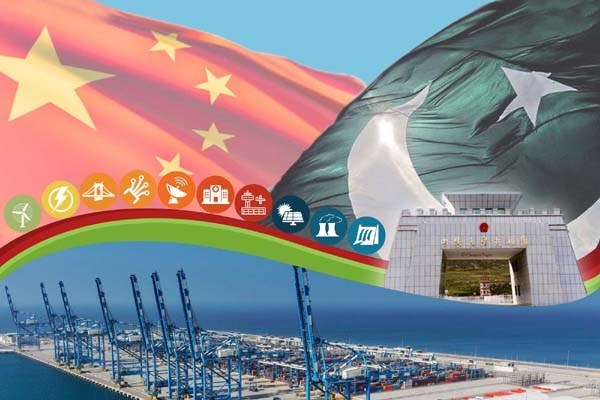
The establishment of Special Economic Zones (SEZs) is an important part of the construction of the China-Pakistan Economic Corridor (CPEC) and is the enrichment and extension of the CPEC development, a Chinese scholar said.
Recently, the government of Pakistan has announced the establishment of 10 Special Economic Zones (SEZs) in four provinces. “My understanding is that to establish SEZs is to implement special economic policies and systems different from those of other regions in SEZs,” Cheng Xizhong, Visiting Professor at Southwest University of Political Science and Law said in his article published in China Economic Net.
He opined that the distribution of the special economic zones in the four provinces is reasonable. Half of the special economic zones are located in the Punjab; two are in the Sindh and Balochistan respectively, and one is in the Khyber Pakhtunkhwa province.
It is not necessary that every region of a country should be promoted in an absolutely balanced way. The reason why China’s first established SEZ is situated in coastal areas is that these areas have the potential to absorb foreign capital, advanced science, technology and management experience. When the most developed regions are further developed, they will help develop other regions, so as to put the national economy and technology on the track of rapid development.
He said the successful first stage of the CPEC has created good conditions for Pakistan to establish SEZs. The CPEC covers the whole country of Pakistan from north to south, and all parts of Pakistan can get various benefits.
Now, China and Pakistan are committed to the second phase construction of the CPEC. While continuing to promote infrastructure construction, the second stage focuses on SEZs, industrial parks, agricultural demonstration zones and livelihood projects.
The construction of the CPEC is not just to build a corridor, but to drive the social and economic development of Pakistan as well. Therefore, the establishment of SEZs is an important part of the construction of the CPEC and is the enrichment and extension of the CPEC development, he added.
He remarked that national conditions vary from country to country, so special and brand-new economic policies and systems should be determined according to the actual situation of the country with its own characteristics.
The overall target is to make SEZs attractive to domestic and foreign investors through the promulgation of a series of preferential policies, so that they are willing to invest in the SEZs on a large scale, and SEZs can kick-start the economic and technological development of the nation.
Sharing the practice of China’s SEZs, he said in April 1979, Deng Xiaoping, the Chief Architect of China’s Reform and Opening-up, first proposed the establishment of “special export zone”. In March 1980, the name of “special export zone” was changed to “Special Economic Zone”, which was first implemented in South China’ Shenzhen City.
In essence, SEZ is one of the main forms of free port area in the world. By tariff reduction and other preferential policies, and by creating a good investment environment, encouraging foreign investment, and introducing advanced technology and scientific management, we can develop national economy and technology.
In SEZs, we should adopt special economic policies, flexible economic measures and special management systems, and adhere to the development target of export-oriented economy.
China is now one of the major investors in the world. There are two advantages in China’s foreign investment, capital and technology. In 2018, China’s overseas direct investment reached $143.04 billion, becoming the second largest foreign investor in the world. Japan, the largest investor, reached $143.16 billion in the same year, a little higher than China’s.
At present, more than 27,000 Chinese investors have established 43,000 overseas direct investment enterprises in 188 countries and regions around the world. There are more than 10,000 overseas enterprises established in the countries and regions along the Belt and Road.
He said it is reported that China will invest $5 billion in Pakistan’s SEZs in the next three to five years. I think this figure is very conservative. The relations between China and Pakistan are so close, and the mutual interests between the two countries blend so closely, so I believe the amount of investment should be much higher than this.
How much will China invest in Pakistan in the next few years? It depends on the courage of Pakistan’s reform and opening-up, the substantial improvement of business environment in Pakistan and how flexible Pakistan’s preferential policies for foreign investment will be. In addition, it depends on the security environment and the stability of Pakistan’s political situation.
Since Prime Minister Imran Khan took office, the government of Pakistan has announced a series of policies that are conducive to economic development and foreign investment in the country. Pakistan’s business environment has continuously improved, so in recent years, foreign businessmen are more and more willing to invest in Pakistan. According to the latest media report, investors from China, Turkey, South Korea and the UK are ready to invest $1.1 billion in the 10 SEZs.
